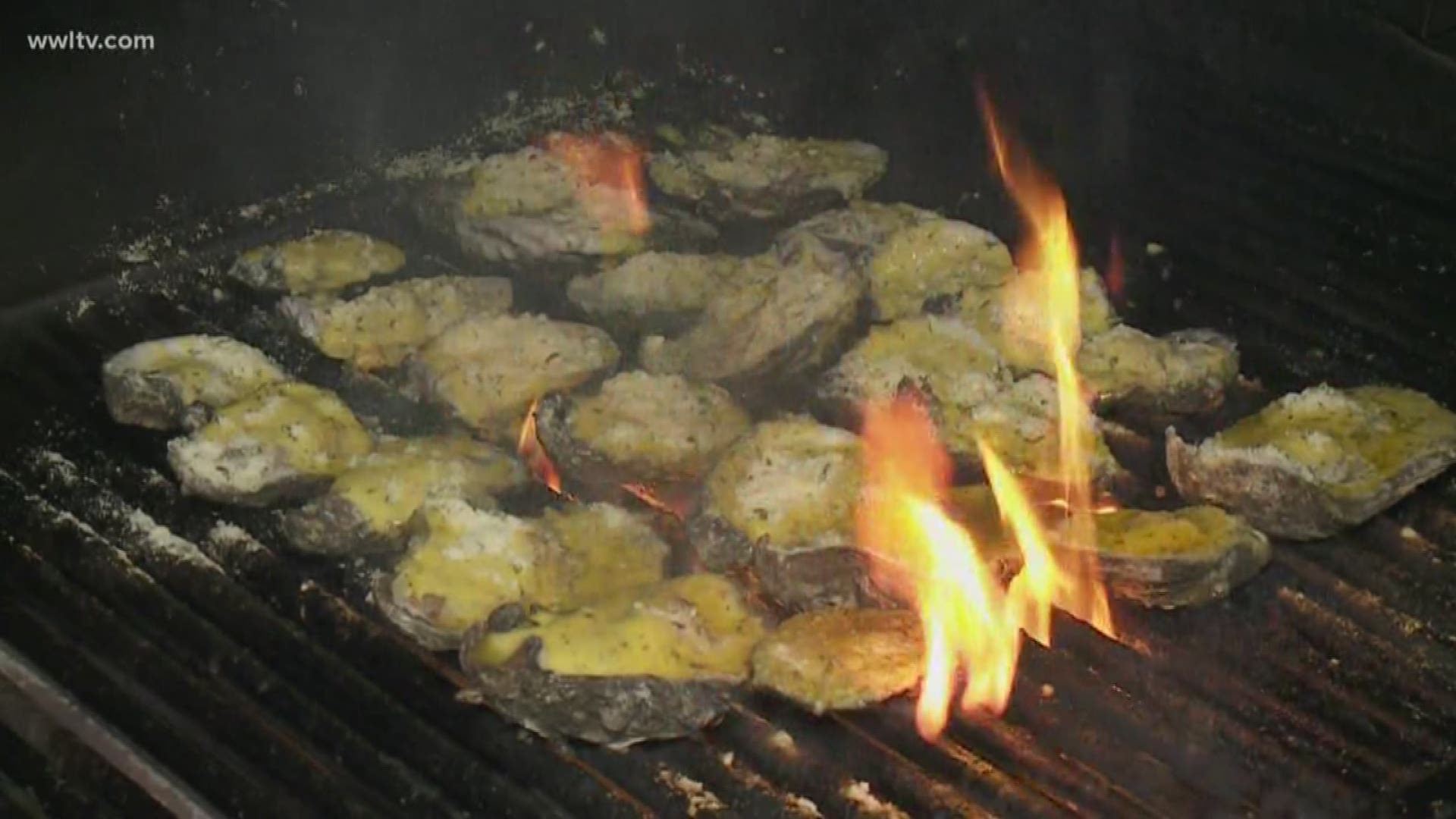HOUMA, La. — After driving three hours to Grand Isle from Baton Rouge to tend their farm, Boris and Elina Guerrero would arrive to find around half of their oyster crop dead throughout the spring.
The mouths of those oysters would be slightly ajar, fixed in a gasp and choked from a lack of salinity.
In a normal year, they typically saw a 20-30% mortality rate due to a range of factors from crabs feasting inside the bags to parasites or heavy wave activity.
“This year, we were not prepared to lose 50%,” said Boris Guerrero on his boat, preparing to tend to their off-bottom oyster business, Grand Isle Sea Farms. “I don’t think it’s something you can prepare for.”
Their floating cage operation in Caminada Bay wasn’t spared by the freshness brought in during the lengthy flooding on the Mississippi River this year that wiped out the wild oyster population in some areas of the state.
Though off-bottom oyster farmers can move their bagged oysters more easily than traditional oystermen when water quality issues arise, they have nowhere to go. The few farmers in Grand Isle’s aquaculture park like Boris Guerrero would like to see that change.
Oysters prefer to live in water with a salinity of 10-24 parts per thousand. Once it drops below 10 parts per thousand, oysters can start to die off. The Guerreros said that salinity hit three parts per thousand, nearly fresh.
“That’s when we had the biggest mortality,” said Boris Guerrero.
It wavered between three and eight parts per thousand until July, when it started to return to normal.
“Now there are talks about needing an emergency place to move everything for a couple weeks,” he said.
The Grand Isle Port Commission opened the state’s first public aquaculture park in 2013 as an experiment. Although it has filled up, it remains the only park of its kind.
The off-bottom method of farming – which involves growing oysters in mesh bags in cages floating in water – is popular in other areas of the country such as the east coast and has begun to take off along the coast of the Gulf of Mexico in Alabama.The oysters grow two to three times faster and have more meat.
But in Louisiana, traditional farming is still king, producing about a third of the oysters harvested in the country each year.
In traditional farming, the oysters grow directly on reefs, cultch or other hard surfaces on water bottoms within the leased area.
Robert Twilley, the executive director of Louisiana SeaGrant, said this is one reason that off-bottom farming has developed so slowly in the state.
“Look at the states that have moved away from their natural fishery to aquaculture, it’s because they’ve had to do it,” he said. “The tendency is to always harvest the natural product. ... Because that’s still so rich in the our state, you don’t see the push here like you do on the east coast."
However, with more frequent flooding from the upper Mississippi River basin and the release of freshwater by state-proposed sediment diversions, Twilley said there is opportunity for farmers to take advantage of the off-bottom method.
Even without sediment diversions, if the trend of increased flooding occurs, “then that will continue to impact our oyster production capacity,” he said.
There is the potential for private property owners to lease their land that has turned from marsh to open water for off-bottom farming in areas more protected from salinity issues and large waves.
The Grand Isle Port Commission is also working on the permits for a second aquaculture park of about 13 acres just a few miles from their first, north of the state’s oyster hatchery in a more sheltered area.
Wayne Keller, the commission’s executive director, said officials had a ton of interest from the oystermen in response to the fear of sediment diversions.
“They’re knocking my door down,” he said, in stark contrast to when the first park opened. “I was filled up a year ago before I even got the permits done for the second park.”
Due to the demand, Keller said prices to lease an acre may go up in the second park. At the current park, it was a two-year lease for $200 per acre.
Even with more spots for off-bottom oystermen, Twilley said there will still be a limit to growth if new hatcheries aren’t opened. Otherwise, there won’t be enough seed for the interested oystermen.
“We keep moving forward very aggressively,” he said. “But the stars have to align before we can come close to matching a 13-million-pound industry.”
Boris Guerrero said he’d like to see more off-bottom oyster farmers enter the industry and look to expand commercially.
“I hope it grows and more people take more notice of what we’re doing and help us out a little. The industry is made for wild oysters,” he said. “I hope the people that come here do want to grow and invest into this business.”
Since they started in 2013, Boris and Elina Guerrero have had two years with 50% mortality. To start up, it cost $36,000 to $45,000 just to purchase and install their first 180 cages.
Despite the steep upfront cost and learning curve, they said they wouldn’t have it any other way. The farm has grown to almost 400 cages and they want to keep expand and sell more of their buttery, teardrop-shaped boutique oysters.
“We struggled a lot, and we’re still struggling, but we’ll keep at it,” said Boris Guerrero. “We love it. That’s why we’re still here, too.”
--Staff Writer Halle Parker can be reached at hparker@houmatoday.com or 857-2204. Follow her on Twitter, @_thehalparker.


